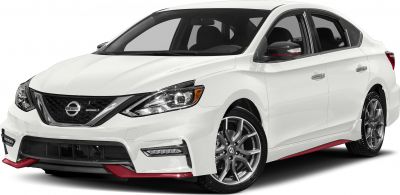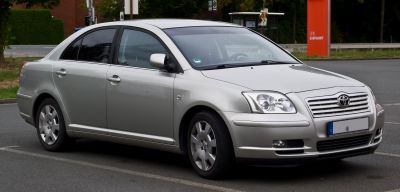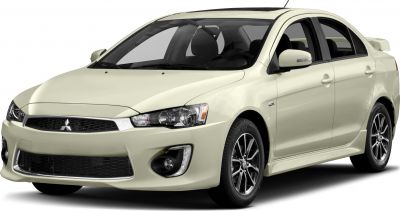 2010 Peugeot 408 I Dimensions, Size & Specs
2010 Peugeot 408 I Dimensions, Size & SpecsMeasurements of the 2010 Peugeot 408 I, engineered for optimal performance and comfort
| Dimensions | |
|---|---|
| Length: | 4688 mm184.6 in15.4 ft |
| Width: | 1815 mm71.5 in6.0 ft |
| Height: | 1525 mm60.0 in5.0 ft |
| Weight Specifications | |
| Curb Weight: | 1401-1450 kg3089-3197 lbs |
| Tire Specifications | |
| Rims Size: |
|
| Tire Size: |
|
The Peugeot 408 I, produced from 2010 to 2014, is a stylish sedan that fits comfortably within the mid-size segment. With an overall length of 4688 mm (184.5 inches), a width of 1815 mm (71.5 inches), and a height of 1525 mm (60 inches), it offers a balanced presence on the road, combining a spacious cabin with manageable external dimensions. The car's curb weight varies between 1401 and 1450 kilograms (3090 to 3197 lbs), reflecting its solid build quality and an emphasis on refined driving dynamics. Riding on 16-inch rims paired with 215/55 R16 tires, the Peugeot 408 ensures a harmonious blend of comfort and grip, suitable for both urban commutes and longer drives. Its aerodynamic and modern design paired with practical dimensions makes the 408 I a compelling choice for drivers looking for a mid-size sedan with European flair and efficiency.
Discover the standout features that make the 2010 Peugeot 408 I a leader in its class
Have a question? Please check our knowledgebase first.
The Peugeot 408 I, produced between 2010 and 2014, has a length of 4688 mm (184.5 inches), a width of 1815 mm (71.5 inches), and a height of 1525 mm (60.0 inches). This size positions it well within the compact sedan category, offering a balanced exterior footprint that provides ample interior space while remaining manageable for urban driving and parking.
The Peugeot 408 I has a curb weight ranging from 1401 kg to 1450 kg (approximately 3088 to 3197 lbs). This weight is fairly typical for a compact sedan, contributing to a stable ride and decent fuel economy. A lighter curb weight generally allows for better acceleration and handling, while also helping to reduce fuel consumption. The 408 I's weight strikes a good balance between sturdiness and efficiency.
Yes, the Peugeot 408 I fits comfortably into a standard garage. Given its length of 4688 mm (184.5 inches) and width of 1815 mm (71.5 inches), it will fit within the common garage dimensions which typically range around 5500 mm (216 inches) in length and 2700 mm (106 inches) in width. This makes it convenient for most homeowners to park the car indoors without any modifications to their garage space.
With a width of 1815 mm (71.5 inches) and height of 1525 mm (60.0 inches), the Peugeot 408 I is fairly average among compact sedans produced around 2010-2014. Many competitors, such as the Volkswagen Jetta or Honda Civic of the era, have similar widths ranging between 1750 mm to 1800 mm and height around 1450 mm to 1500 mm. The 408 I’s slightly taller profile offers more headroom, promoting cabin comfort without making the sedan feel bulky.
The Peugeot 408 I is equipped with 16-inch rims and tires sized 215/55 R16. These tire dimensions provide a good balance between ride comfort and handling performance. The relatively tall sidewall (55 series) helps absorb road imperfections, contributing to a smooth ride, while the 215 mm width offers adequate grip for stable cornering and braking. This setup highlights the 408 I’s design focus on comfort and everyday usability.
Compared to its predecessor, the Peugeot 407, the 408 I offers a slightly longer body length (4688 mm vs. approximately 4710 mm for the 407, though the 407 is more a midsize sedan than a direct predecessor in some markets). The 408 I focuses on a more streamlined and contemporary sedan design with dimensions tailored toward better interior space utilization and improved aerodynamics. The overall size changes emphasize a more modern compact sedan footprint, improving maneuverability and urban practicality relative to the slightly larger, heavier 407.
The Peugeot 408 I offers a roomy cabin relative to other compact sedans of its time, thanks to its dimensions and efficient interior packaging. With its width of 1815 mm and height of 1525 mm, it provides comfortable headroom and shoulder room for passengers. Compared to rivals like the Ford Focus or Toyota Corolla, the 408 I tends to offer a slightly more spacious rear seat and trunk capacity, making it a good option for families or those seeking added space in the compact sedan segment.
Yes, the Peugeot 408 I is well-suited for urban driving and parking. Its length of 4688 mm (184.5 inches) and relatively moderate width make it manageable for tight city streets and parking garages, though it is somewhat longer than smaller compacts. The car’s dimensions strike a balance between providing sufficient passenger space and remaining practical in urban environments. Drivers will appreciate its maneuverability given its sedan class and size.
The Peugeot 408 I combines a relatively large exterior size with a moderate curb weight of 1401-1450 kg (3088-3197 lbs), giving it an edge in interior space without a significant penalty in fuel economy or handling. Its larger body allows for spacious interiors and trunk capacity compared to smaller compact sedans, while its weight is controlled enough to maintain nimble performance and decent fuel efficiency. This balance makes the 408 I competitive against similarly sized 2010-2014 sedans like the Volkswagen Jetta or Mazda 3.
The Peugeot 408 I stands out with its sleek and modern design language characterized by smooth lines and a distinctive front grille, reflective of Peugeot’s design evolution in the early 2010s. In addition to its aesthetic appeal, the 408 I offers a well-appointed interior with focus on comfort and ergonomics, delivering features such as a spacious cabin and user-friendly controls. Its suspension tuning and chassis balance provide a comfortable ride with confident handling, making it an attractive choice for those valuing style and practicality in a compact sedan.
Discover similar sized cars.

| Production: | 2016-2019 |
|---|---|
| Model Year: | 2016 |
| Length: | 4625-4663 mm182.1-183.6 in |
| Width: | 1760 mm69.3 in |
| Height: | 1499 mm59.0 in |

| Production: | 2016-2019 |
|---|---|
| Model Year: | 2016 |
| Length: | 4631 mm182.3 in |
| Width: | 1760 mm69.3 in |
| Height: | 1503 mm59.2 in |

| Production: | 2003-2009 |
|---|---|
| Model Year: | 2003 |
| Length: | 4630 mm182.3 in |
| Width: | 1760 mm69.3 in |
| Height: | 1480 mm58.3 in |

| Production: | 2015-2017 |
|---|---|
| Model Year: | 2016 |
| Length: | 4625 mm182.1 in |
| Width: | 2029-2044 mm79.9-80.5 in |
| Height: | 1480 mm58.3 in |
